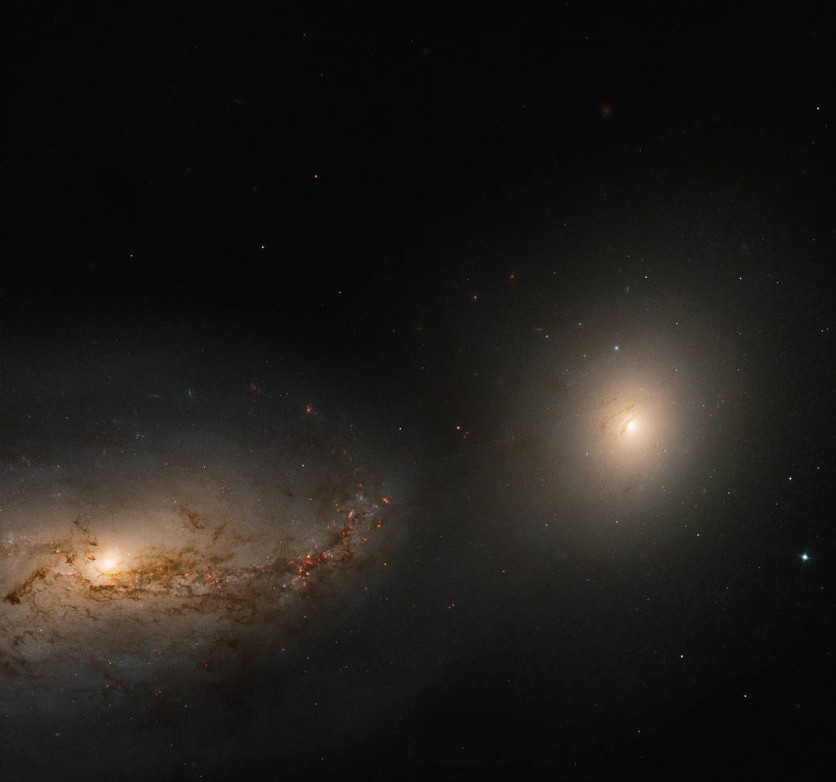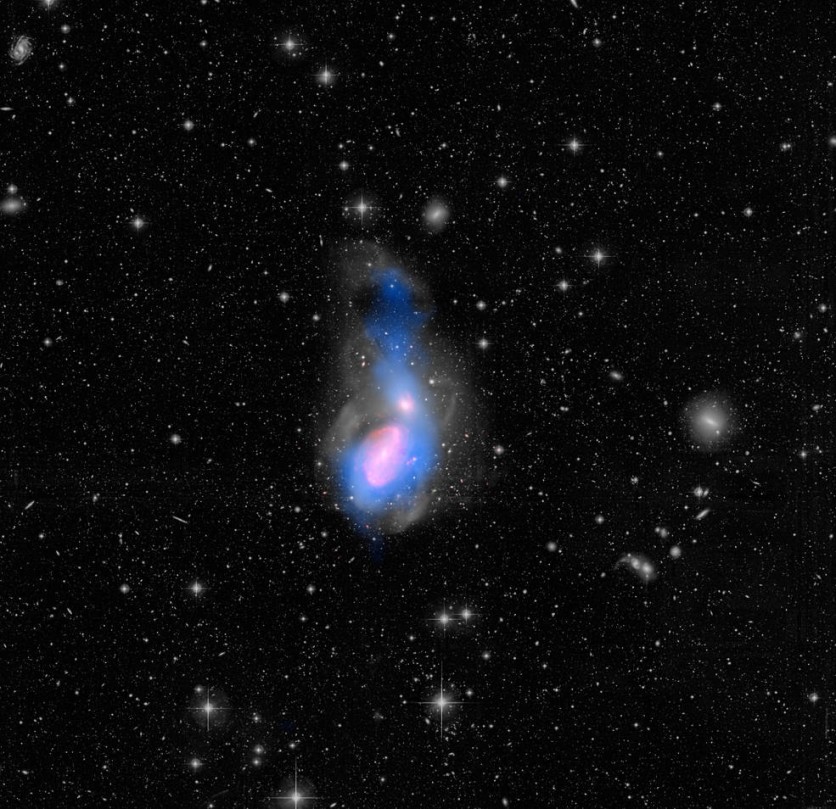NASA's Hubble Space Telescope encountered two galaxies interacting in a turbulent gravitational dance. This fascinating yet haunting photo features these galaxies that are connected to the corpse of a cannibalized neighbor.

A Haunting Dance
This galactic dance includes the large spiral galaxy NGC 3227 and the elliptical galaxy NGC 3226, which are collectively known as Arp 94. These galaxies live relatively close to Earth, around 50 million and 60 million light-years away, located near the constellation Leo.
The new Hubble Space Telescope image displays faint tidal streams of gas and dust connecting the NGC 3227 to the NGC 3226 in their gravitational dance. This observation was made possible through NASA's program to measure black holes lying at the center of bright cluster galaxies, according to a statement from the space agency.
The spiral NGC 3227 is classified as a Seyfert Galaxy - a kind of galaxy that holds an active nucleus and is fueled by a supermassive black hole found at its core. According to NASA, when the black hole swallows in material from its surroundings, it ejects large amounts of radiation, which powers the galaxy's active nucleus.
Hubble telescope was employed to measure the mass of the galaxy's black hole by studying the dynamics of the inflowing gas coming from its core. The space telescope was able to snap both visible red and near-infrared wavelengths of light, represented by the read areas found in the photo.
NGC 3227 is displayed in the lower left of the Hubble photo, while NGC 3226 is found at the upper right of the spiral galaxy.
This new image was released on Wednesday, May 25, and it provides a sharp view of the dark dust lanes and brilliant star-forming regions that NGC 3227 possesses. The photo also highlights the bright streamers of material linking the two galaxies.
Connected by a Cannibalized Galaxy
Hubble observations conducted in the past suggest that the streamers connecting the two galaxies are remnants of a third galaxy that was likely to be devoured by NGC 3226, which resulted in the scattered shreds of gas and dust of a cannibalized galaxy spread across space.

These earlier observations also indicate that NGC 3226 has a low rate of star formation even though it has large streams of gas and dust - remnants of a dead galaxy- flowing right into its core.
According to NASA's statement back in 2014, NGC 3226 is relatively close since it is only 50 million light-years away. The space agency described "several star-studded, gassy loops" emanating from the large spiral galaxy.
The illustration above shows a surge of warm gas into a nearby galaxy, according to NASA, the streamer between the spiral and elliptical galaxy has "extinguished star formation by agitating the available chilled gas.
Furthermore, a remarkable piece of these galactic leftovers stretches 100,000 light-years and expands right into the core of NGC 3226. The long tail's end has a curved plume in a disk of warm hydrogen gas and a ring of dust.
NASA added that contents found in the tail are falling into NGC 3226 because it is drawn by its gravity.
This article is owned by Tech Times
Written by Joaquin Victor Tacla
ⓒ 2025 TECHTIMES.com All rights reserved. Do not reproduce without permission.




